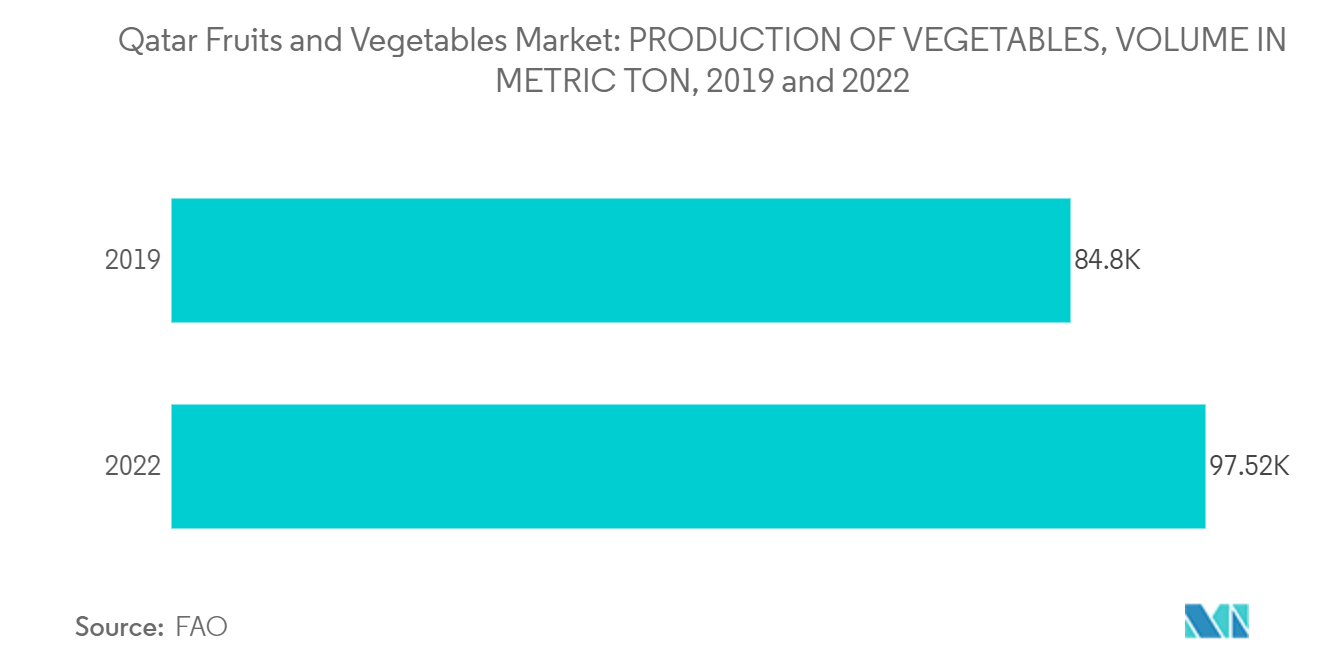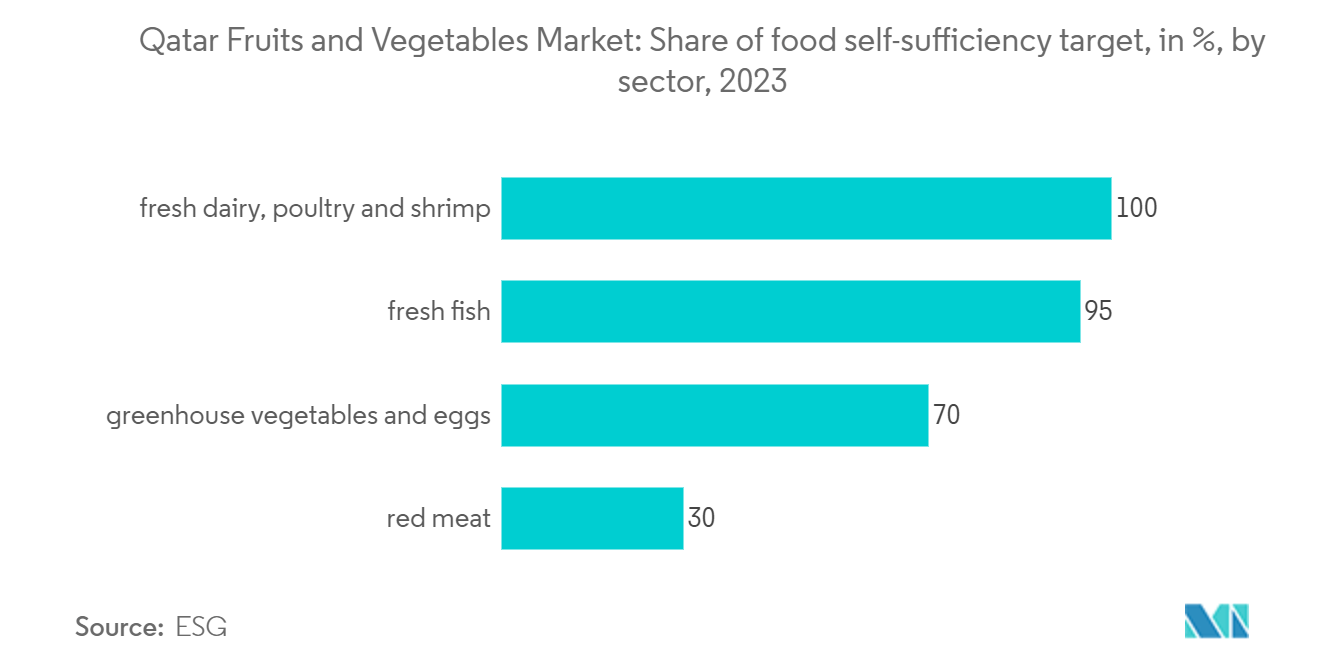Market Trends of Qatar Fruits And Vegetables Industry
Increase in Adoption of High Technology Farming Practices
The climate in Qatar is characterized by low rainfall and high temperatures. Despite these challenges, the country has made tremendous efforts by adopting sustainable and smart agriculture, such as hydroponics, smart irrigation, and aquaponics, to improve the optimum utilization of arable land and the quality of fruits and vegetables. For instance, in 2022, the Institute of Urban Agriculture (IUA) of the Chinese Academy of Agricultural Sciences (CAAS) improved the pattern of vegetable production in Qatar by introducing a new combination of hydroponics and solid active fiber soil technique or the Leitu technique. The technique replaces soil with an ecological material mainly made from straw, cotton stalks, and other agricultural and forestry wastes. It also provides growing conditions for more varieties of vegetables, including leafy greens, eggplants, tomatoes, and cucumbers.

Increased Focus on Sustainability and Organic Food Products
The trend of local produce products is gaining traction among Qatar consumers. Consumers perceive local produce as of better quality and are aware of the low carbon footprint of such products, including fruits and vegetables, compared to imported products. Moreover, the rising health-conscious population in Qatar is moving towards higher quality and long-lasting juices. Consumers also want to know the farm-to-shop journey with the most diminutive carbon footprint. Therefore, Qatari companies diversifying into juices focus on adopting various sustainable practices to retain their consumer base. Further, the government created a conducive environment for farming by using sustainable agriculture practices to overcome the challenges of the blockade against Qatar by its neighboring countries, such as Saudi Arabia, the United Arab Emirates, Bahrain, and Egypt. As a result of such government initiatives, vegetable production grew during the study period and is anticipated to further boost during the forecast period. For instance, according to FAO, the total vegetable production in Qatar rose from 84,795 metric tons in 2019 to 97,519 metric tons in 2022.


